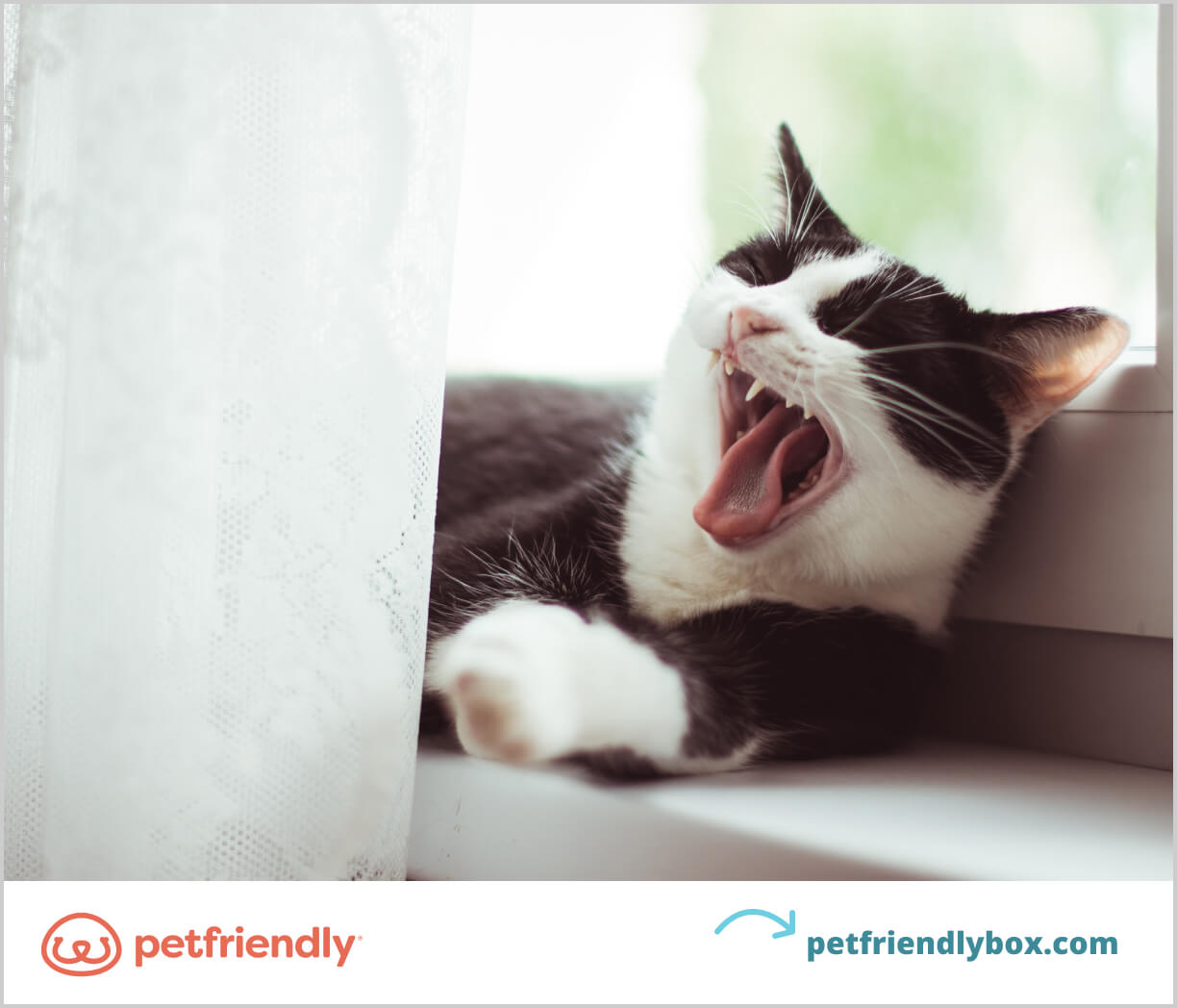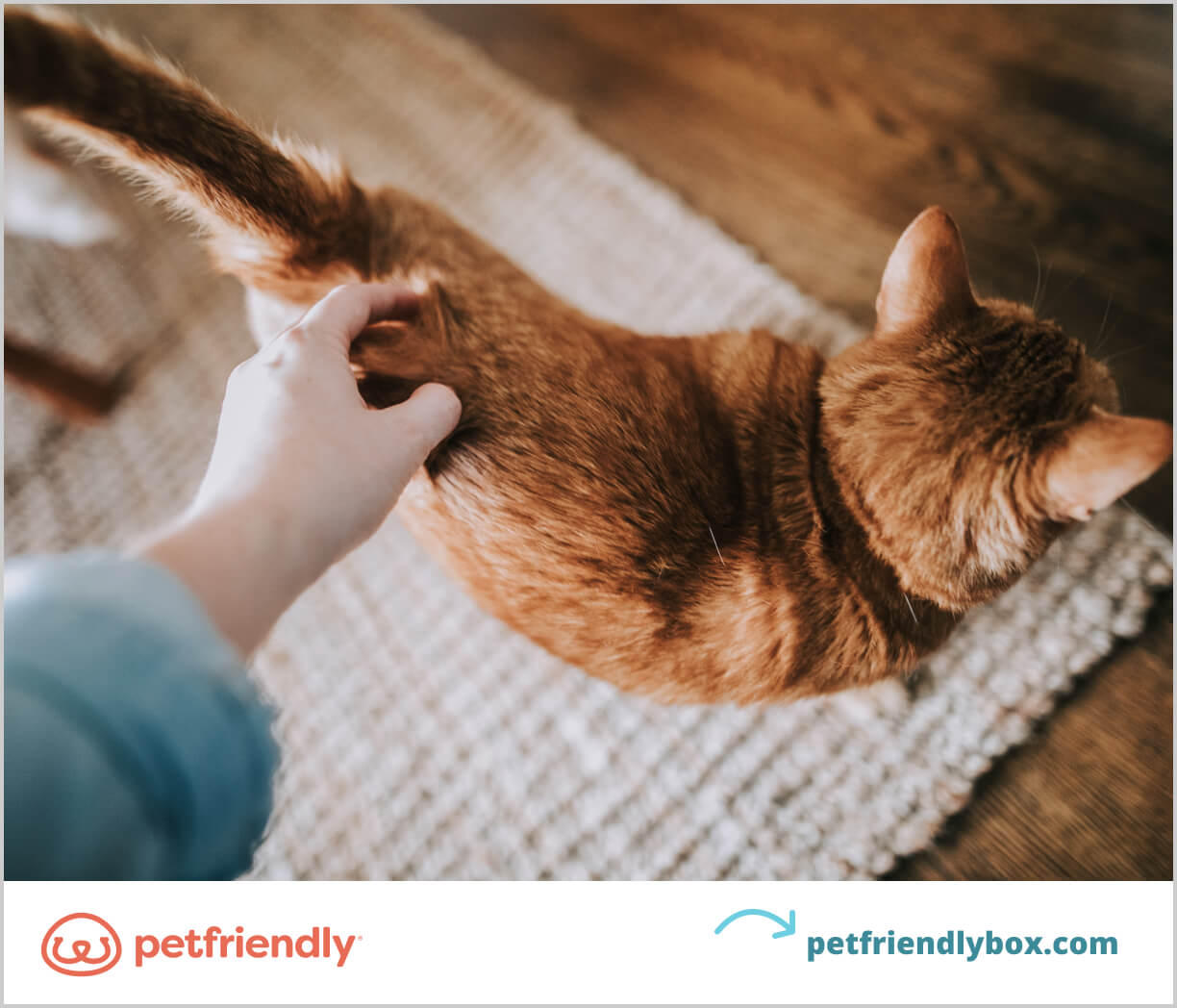From pet care to handling deadlines at work, pet parents experience a lot of stress. But did you know that pets can too?
Cats experience and handle stress in their own unique ways. From cat check-ups to sudden exposure to a new environment, your cat or kitten can find themselves in stressful situations.
To ensure your cat is happy and healthy it's important to know why most cats experience stress. Then, you'll want to know the best way to keep your cat calm.
In this article, we'll cover:
- 3 reasons why cats get anxiety
- Signs of cat anxiety
- How to calm down a stressed cat
- Safe hiding spaces for your cat

3 reasons cats get anxiety

Before attempting to calm a cat, it's important to know the reason your cat is feeling stressed in the first place. Stress often stems from anxiety.
But why do cats experience anxiety? Cat anxiety can be caused by:
1. Psychological triggers
If you adopted your cat and didn't have them as a kitten, they may have experienced trauma. Some common examples include abuse or neglect. If this is the case, loud noises or being alone may trigger your cat.
2. Lack of socialization
If your cat is not exposed to other animals or humans often, they may develop a fear of them. Introducing your kitten to other cats, dogs, and humans in a safe way can aid in socialization.
3. Environmental factors
Exposing your cat to a new environment can be frightening for some. Be aware of environmental factors that may contribute to stress like:
- Loud noises
- Other animals
- Car rides
- Unfamiliar people
- New environments
VET TIP
If you have a dog in your home, make sure you’re paying attention to how they interact. Cats can often feel threatened by dogs, so allow your cat to approach your dog on its own terms.

Signs of cat anxiety

Symptoms of stress and anxiety can be hard to detect. Monitoring your cat's body language and behavior can help you get ahead of any potential triggers.
The most common signs of cat anxiety include:
- Repetitive behaviors
- Avoidance
- Loss of appetite
- Aggressive behaviors
Repetitive behaviors
Most stressed cats resort to repetitive behaviors because they seek comfort. These behaviors can be harmful to your feline friend and your house if they happen too often.
Examples of repetitive behaviors in cats include:
Scratching furniture
Many cats scratch furniture when they feel stressed. Consider buying a cat tree or scratch post for them to use instead.
Chewing on fabric
Stressed cats may have the urge to chew on materials including fabric, paper, or plastic. Solve the issue of chewing on fabric by offering your cat a toy or a treat instead.
Over-grooming
Over-grooming is especially harmful to cats, as it can cause their fur to rub off. This can lead to bald spots, skin irritation, and infection.
Excessive meowing
Your cat might be meowing because they are trying to tell you something. They may be afraid, in pain, sick, or simply want your attention.
VET TIP
A cat who meows a lot should be taken to visit a veterinarian. They can make sure your cat isn’t suffering from a medical condition.
Avoidance
Stress can cause a cat to avoid their litter box, especially if it's in a location they dislike. Your cat may avoid their litter box if it's located:
- In a high-traffic area of your house
- In a loud area
- Near an appliance like a washing machine
- Near their food or water
To combat this issue, try moving your cat's litter box to a new, quiet location where they feel most comfortable. After you move it to a new location, change the litter inside of the box. This will give your cat a "fresh start."
Cats usually prefer one to two inches of litter, so make sure you don't overfill. Too much litter in their box can also encourage avoidance.
Loss of appetite
Emotional stress can make a sensitive cat anxious. Cats feel emotions like humans and can lose their appetite when their anxiety spikes. Loss of appetite is also common in cats with whisker stress.
If your cat is avoiding feeding times, try these tips to encourage them to eat:
- Try a different type of food
- Warm the food up to a safe temperature
- Hand-feed your cat
- Switch up their bowl
- Add strong-smelling treats or meal topper
Strong smells can entice a cat to eat. Adding chicken broth, tuna, or catnip to your cat's meal may get them more excited about eating in times of stress.
Monitor your cat's behavior when they eat. An aggressive cat might guard their food. In this case, your cat may respond better to privacy during feeding times.
VET TIP
If your cat avoids their meal for more than 24 hours, visit your veterinarian's office. This could be a sign of a more serious health issue.
Aggressive behaviors
Stressful situations can cause a scared cat to lash out with aggressive behaviors. Typical signs of aggressive behavior include:
- Dilated pupils
- Arched back
- Flattened ears
- Raised hairs
- Hissing
- Scratching
- Biting
- Guarding food
VET TIP
If your cat exhibits aggressive behavior, it could also show a health issue. Arthritis, dental disease, and infections can also cause aggression in your cat. Consult your veterinarian if you notice aggressive body language to rule out a potential health issue.

How to calm a stressed cat down

Once you've identified the signs or behavior in your stressed cat, you’ll need a good method to calm them down. Here are five ways to help you calm a cat.
1. Take it slow.
Cats are sensitive to movement and have good color vision. Your cat's hearing abilities are more sensitive than other animals and humans.
When your kitty is ready to be near you, use a calm voice when speaking to them and move slowly. If your cat responds well to music, play soft music or white noise to soothe them.
When your pet wants to snuggle or cuddle, be gentle. Cats prefer soft petting on their head and neck. Avoid touching sensitive areas such as their stomach or tail.
2. Use catnip or calming supplements.
Catnip (nepeta cataria) is an herb in the mint family that cats love and respond positively to. But does catnip calm cats? Yes!
When cats react to catnip, it gives them an elevated sense of happiness. Catnip comes in many forms, with dried catnip being the most common. Catnip sprays are a great solution for a stressed-out kitty.
Pay attention to how your cats respond to catnip treats, toys with catnip, or other forms. It's not common for cats to overdose on catnip but they can get an upset stomach if they consume too much.
If your cat shows anxious behaviors, consider trying a calming supplement to help. Consult your veterinarian to find a supplemental option that works for you and your pet.
3. Diffuse calming essential oils.
A cat's sense of smell is the primary way they identify people and objects. It also contributes to sexual activity, communication, and eating habits.
This is why using essential oils is a popular way to calm your cat. Their scent has a calming effect that can lessen negative behavior and fear in your cat. Here are some safe options for cats:
- Lavender
- Frankincense
- Helichrysum
- Rosemary
- Copaiba
- Oregano
- Cedarwood
4. Make time for play.
Pets need to play like children do to combat boredom. Playing with young cats often helps reduce chronic stress as they grow into adult cats.
Entertaining and playing with your cat is a great way to help them acclimate to new places. Regular play also helps your cat become familiar with new environments and socialize. Many cats respond better when they associate play and treats with a new area.
Cat toys with food rewards are especially helpful in calming your cat. Consider buying your cat enrichment toys like a scratching post or snuffle mat. These are great for passing time and distracting from the stresses of the world.
5. Create a safe environment.
When you detect stress-induced behavior in your scared cat, give them space to get away, reduce fear, and relax. They'll come back to you for cuddles or to play when they're ready.
Provide your kitty with a small, quiet, dark space when they’re feeling overwhelmed. This safe space should include familiar smells and materials.
Be sure to have a safe environment set up for these scenarios so you don't leave your cat scared.
- At home
- While traveling
- At your overnight boarding kennel or daycare
- At friends' or family members’ homes
- Outdoors
- Meeting new or strange people
Safe hiding spaces for your cat

Cats are prey animals, meaning they instinctually hide to feel safe and comfortable. Safe hiding spaces give your cat a cozy environment to retreat to when stressed.
Your cat's scent is unique and familiar to them. When pets rub against something like a blanket or furniture, they put their own scent on it. This is called scent marking. Scent marking helps cats create positive associations with new locations and feel safe.
Identify one room in your house where your cat feels safe and create a hiding space there. Set them up with a cozy bed and familiar toys. They will find items with a familiar scent comforting in times of stress.
Ideas for safe hiding spaces for your cat:
- A laundry basket with soft blankets
- A dark, quiet room
- Cardboard boxes
- A cat tree
- A cat carrier
Final thoughts
Many factors come into play when comforting a scared cat. And every pet handles stress differently. Remember, cats are sensitive to their owner's emotions and actions. Whether it's a trip to your vet or meeting a new pet, these tips can be helpful for pet parents. 

